We’re in County Antrim where the biggest natural attraction is the Giant’s Causeway rock formation. The dramatic drive along the coast is repeatedly framed by full arch rainbows. The causeway is an area of the coast with about 40,000 interlocking volcanic basalt columns, the tops of which form hexagonal stepping stones. Entire lengths of the solidified columns line parts of the cliff face. The scene, as we walk away from the causeway along the coastal path is fabulous. It appears as if we’re walking along the edge of a semi-circular volcanic crater. I scale the fence on the cliff edge and stumble down the steep grassy slope where there’s a terrific view of the waves crashing on the rocks below. We’re back in the van just as a heavy, rainbow accompanied shower descends.

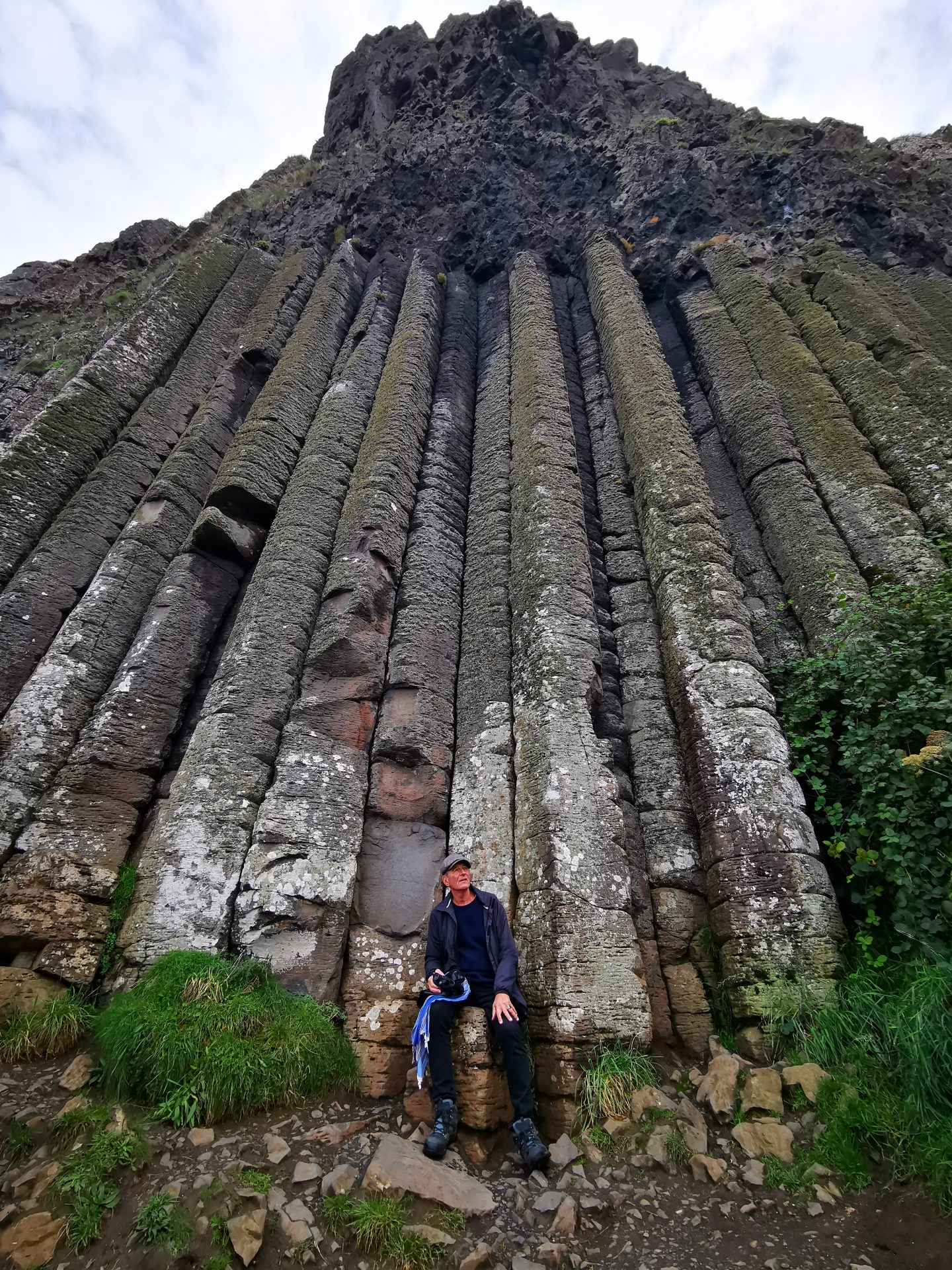
We inadvertently find a huge brand new car park overlooking craggy Carrick Island and the rope bridge that joins it to the mainland. The construction team have yet to erect any ‘No Overnight Parking’ signs or a height restriction barrier (we’ll encounter plenty of these, especially in County Mayo in the west – why are they so authoritarian down there?), so we park here for the night and bake a pasta dish in the oven.
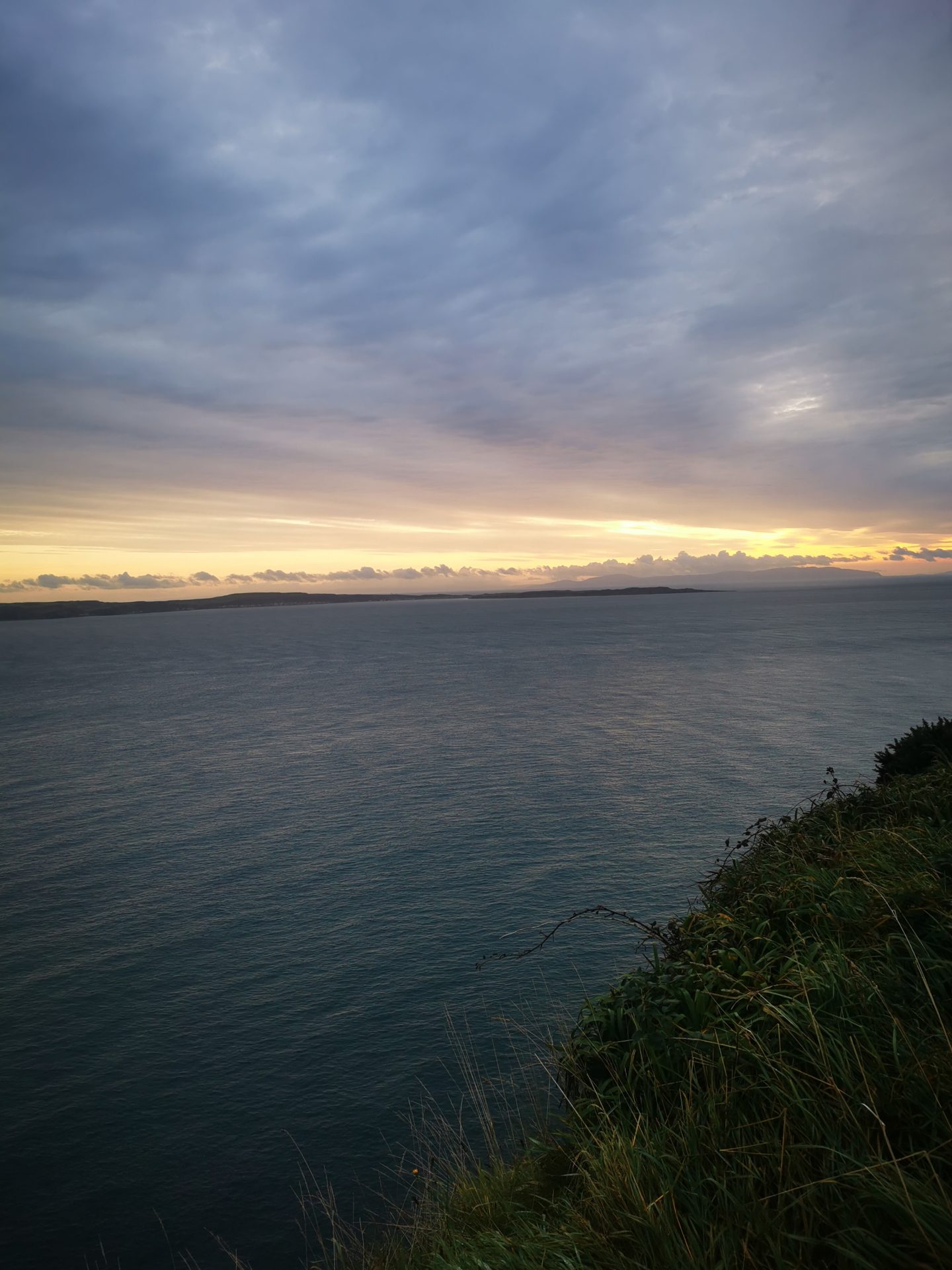
It’s early Wednesday morning and we quickly decide to drive south on the fastest Google route to Ennis in County Mayo. With a couple of pit stops, including a brief shopping visit to Sligo it should take us about 6 hours. From Ennis we’ll return north along the wild Atlantic coast to Donegal where, on 7th October we’ll attend the wedding of our friends Noel and Laura whom we met in southern India earlier in the year.
Having hit land for the first time since leaving America, the weather is running amok. Storm Agnes is coming and despite the endless yellow warnings on the radio (or what one hysteric calls the high end of yellow) I’m not too worried. With a name like Agnes she should be wearing a woolly scarf and sensible shoes, might even make us a nice cup of tea. As it turns out I’m right because Agnes is tracking up the east coast and, other than some terrific downpours, doesn’t trouble us too much. I’m getting used to the Irish grasp of the weather. The gentleman sales assistant in Mullaney Brothers clothes shop in Sligo tells us that storms with trajectories like Agnes often spare the northwest, and he said, ‘There’ll be torrential storm rain today but it’ll be normal rain again tomorrow.’
It’s early evening when we arrive in Ennis, the attractive county town of Clare. There’s a carpark near Clare Abbey surrounded by trees where we park up and consider the possibilities of staying for the night. I get out for a look around. There’s an official looking van parked nearby and the driver opens his door and beckons me over. He smiles, shows me his car park attendant cap and tells me that parking will be free in 15 minutes at 6pm. I ask him if we can stay here for the night. ‘Technically, no’. He says. ‘But sure nobody’ll bother you.’
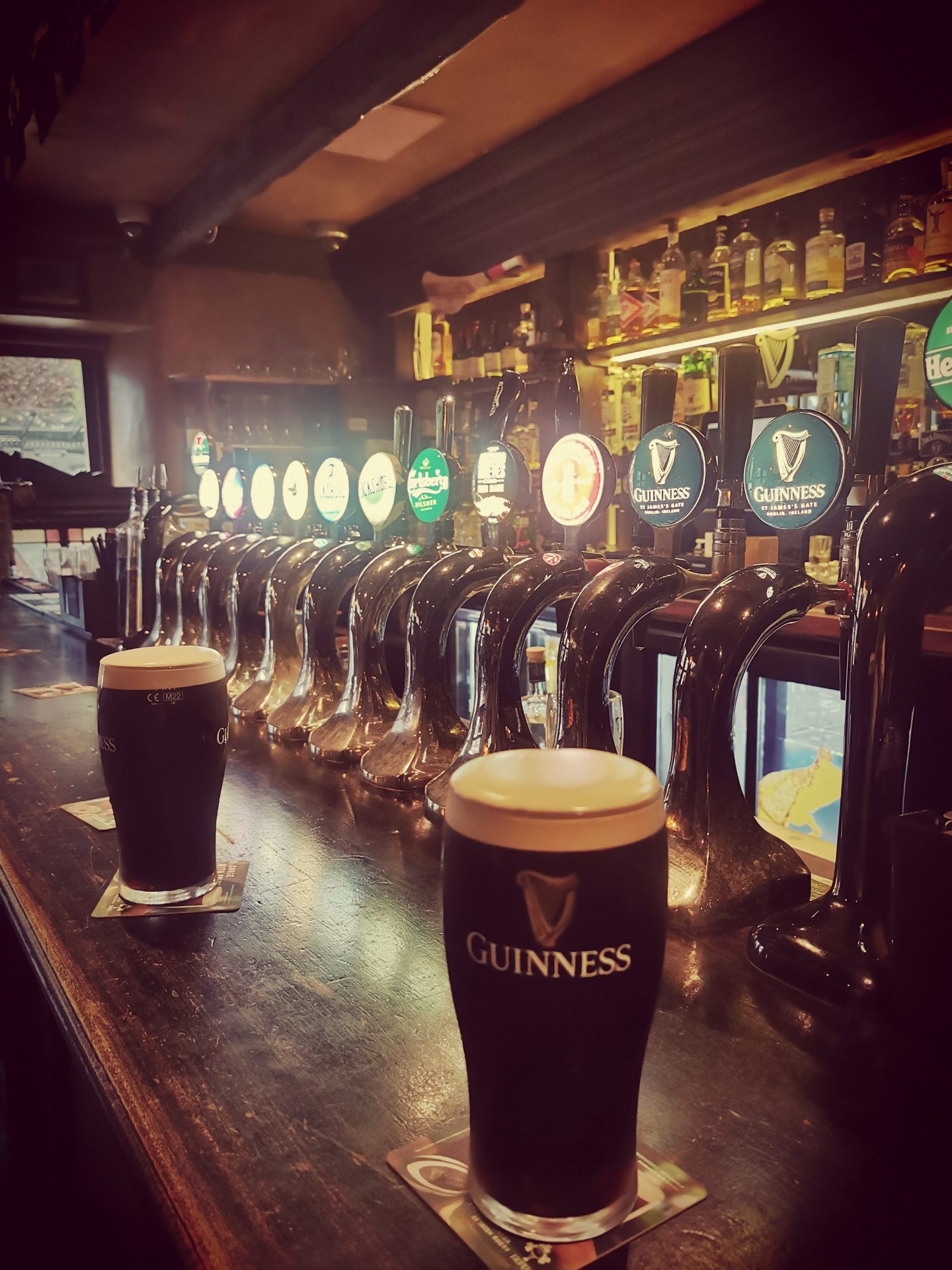
Jo and I have a history of pub crawling in Ireland. Not long after we started walking out together we spent a long summer weekend in Dublin where we saw The Black Keys at the O2. The following night we crawled round the six oldest pubs in the city – some of them proper dodgy. Here, in the dawn of our relationship, I discovered Jo’s capacity for Guinness and whiskey chasers. A couple of years later we found ourselves on a wee St. Patrick’s day pub crawl, with my cousin Urbanie and her man Colum, through the picturesque narrow streets of Carlingford in the north east of the republic. At the tail end of this jolly we walked into a very busy bar when I heard the screams of a trio of plastered young women. ‘Gerry Kelly. It’s Gerry Kelly.’ they shouted. As I looked behind me to see who they were talking about, I was set upon, lost my balance and tumbled to the floor with the girls spread about me. ‘Oh my God, it’s Gerry Kelly,’ they squealed. I’m not accustomed to this kind of groupie assault, but at the time I was more perplexed than shocked. Who the hell is Gerry Kelly? As it turns out Kelly used to be a Provisional IRA volunteer and a renowned Sinn Fein politician. And I don’t think I look anything like him.
South of the river Fergus, Ennis has plenty of splendid looking bars and restaurants, but Michael Kerins bar, north across the bridge, will do for starters. It’s busy and almost entirely patronised by men. The three TVs are showing the horse racing from Newmarket and there’s none of that food nonsense. The first pint of Guinness in Ireland is the most anticipated so it has to be good. Settling pints are lined up on the bar which is a very positive sign. We order a couple of pints and clunk glasses, ‘slainte’. The texture and flavour is like no other beer, and as Guinness is good for us so we have two more.


We walk down the road, back across the bridge over the swollen, fast flowing river, and into the town to Cruise’s Bar. Next to the Abbey, it’s a vast empty place with several bars. We stop for just a swift pint here but we linger, the woman behind the bar is very chatty and tells us the Michael Flatley came in for a drink once and had his photograph taken with her. She points to it hanging behind her.
Alexander Knox & Co has a beautiful red Victorian frontage. Knox’s pub is one of those warm, Irish establishments with peat fires, antiques and collectibles in every nook, a great menu and a local band playing traditional Irish music by the fireplace. Here we eat roasted fresh hake and have another couple of pints.
We’re out on the street, five pints to the good and it’s raining, so a quick dash to Brian Kelly’s bar, another food free zone where a few fellas are sitting at the bar including old Sean who’s been sitting here for some time I think. He has a twinkle in his eyes for Jo and a deep reservoir of long Kerryman jokes, the plots of which I lose well before the punch line. ‘Go home now Seanie. ‘ says the barman. But Seanie has another joke and wants to shake and hold Jo’s hand.
Lastly to Paddy Quins and a pint for the road. We sit at the bar, a short distance from a young lad from New York and his Columbian wife. There’s an elderly widow sitting at a table behind us; ‘My dear husband died last year and I’m all alone now.’ she declares several times when there’s a lull in the chat. An old boy sits some distance away by the front door. Somehow we all engage in the same conversation. Jo is ‘in the zone’ now and on the whiskey. I’ve been doing a lot of driving today and am starting to flag. Eventually I intercept Jo’s order for another shot and we extricate ourselves.
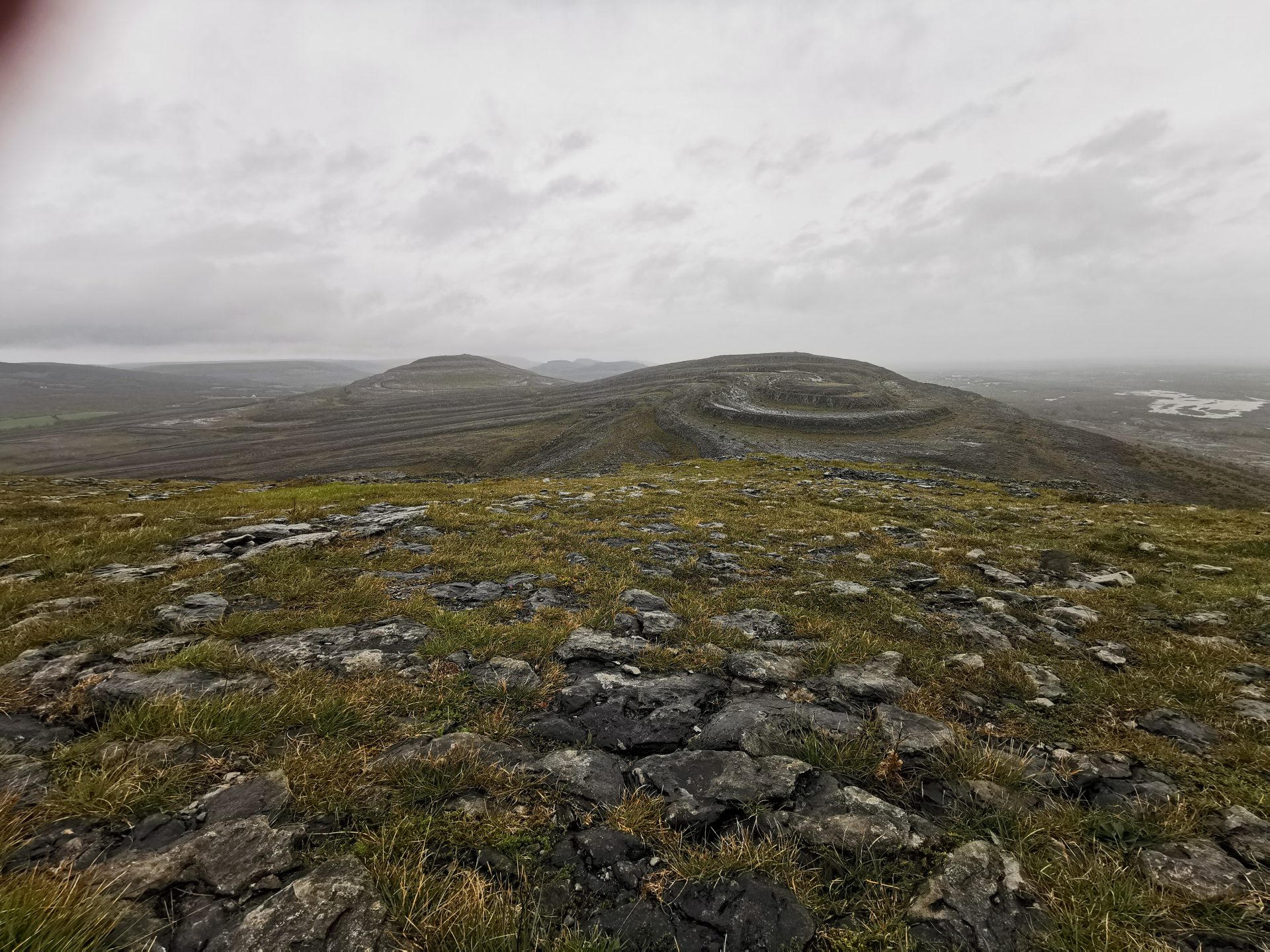
The next morning we’re feeling surprisingly grand and drive off to find the Burren National Park. On a fine Spring day some thirty years ago I drove along the Clare coast and was astounded by the boulder strewn hills and beaches, more redolent, I thought, of the Middle East than the Irish coast. The Burren is 200 square miles of melancholy, wild, rock covered heath and grassland hills with just a few marked trails in the small National Park. We walk a five mile trail to a broad hill surmounted by an enormous spiral rock formation. It’s slow going on the rocky surface but it’s a fabulous trek. There are dry stone walls on the route, which break all the rules of Yorkshire dry stone walling, the stones sitting at odd angles with big gaps between them. The top coping stones are similarly set at odd angles. ‘But look,’ says Jo as she gives a coping stone a good shove, ‘it’s incredibly stable’. Unfortunately the top of the wall collapses leaving Jo looking a bit embarrassed.
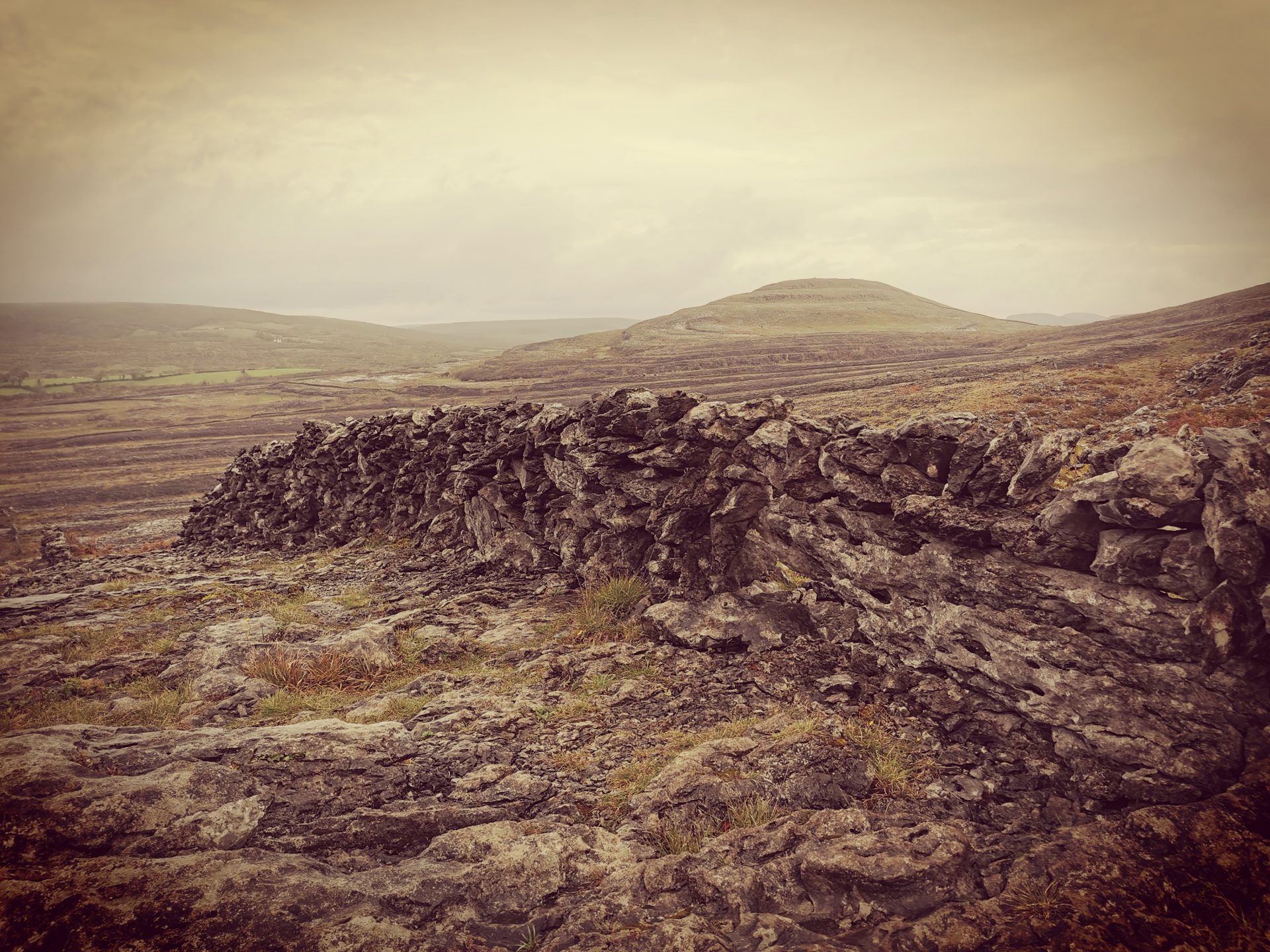
For the next stage of our Irish journey please visit Hiking and Hare Coursing in Clare.